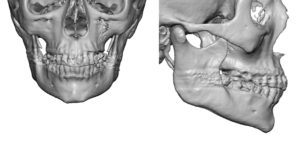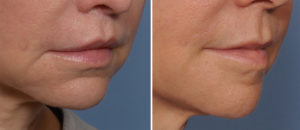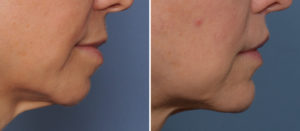Background: Chin implant augmentation is the most commonly performed of all facial implants. The procedure has been done for over fifty years and, as a result, a wide variety of chin implant styles have been developed. While often named after the surgeon who developed them (which is not particularly helpful in understanding what they are intended to do), just about every aspect of every external chin change can be accomplished.
It is important to remember that most chin implants have been developed for the ‘average’ facial bones they augment and are based on anatomical skeletal models. As a result they will not fit everyone’s face well and create the exact intended aesthetic result. This becomes particularly evident in cases where the anatomy is abnormal such as in bony chin asymmetry, vertical chin deficiencies, gender specific needs and when the aesthetic demands are ‘extraordinary’.
Surgeons often try to make standard chin implants work in these non-standard augmentation situations through modification of the implant or in its bony position. And while it may work some of the time, there are many instances when it does not. These aesthetic failures create the need for a custom chin implant approach. And also illustrate why a custom implant approach may have been done initially.



Just because the area of chin coverage may be relatively small does not mean that there does need to be an exacting design to it. Like the nose the projection nature of the chin makes its shape erasely apparent and scrutinized.
Highlights:
1) Not all standard chin implants work well for everyone.
2) The most common reasons a standard chin implant is inadequate is when there is bony chin asymmetry, a need for vertical lengthening, dimensions beyond what standard sizes can do or when extensions are needed far back along the jawline.
3) A custom chin implant is most commonly used when a standard chin implant has ‘failed’, unless the surgeon first recognizes how likely a standard implant can work.
Dr. Barry Eppley
Indianapolis, Indiana



